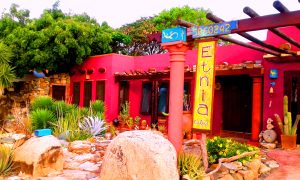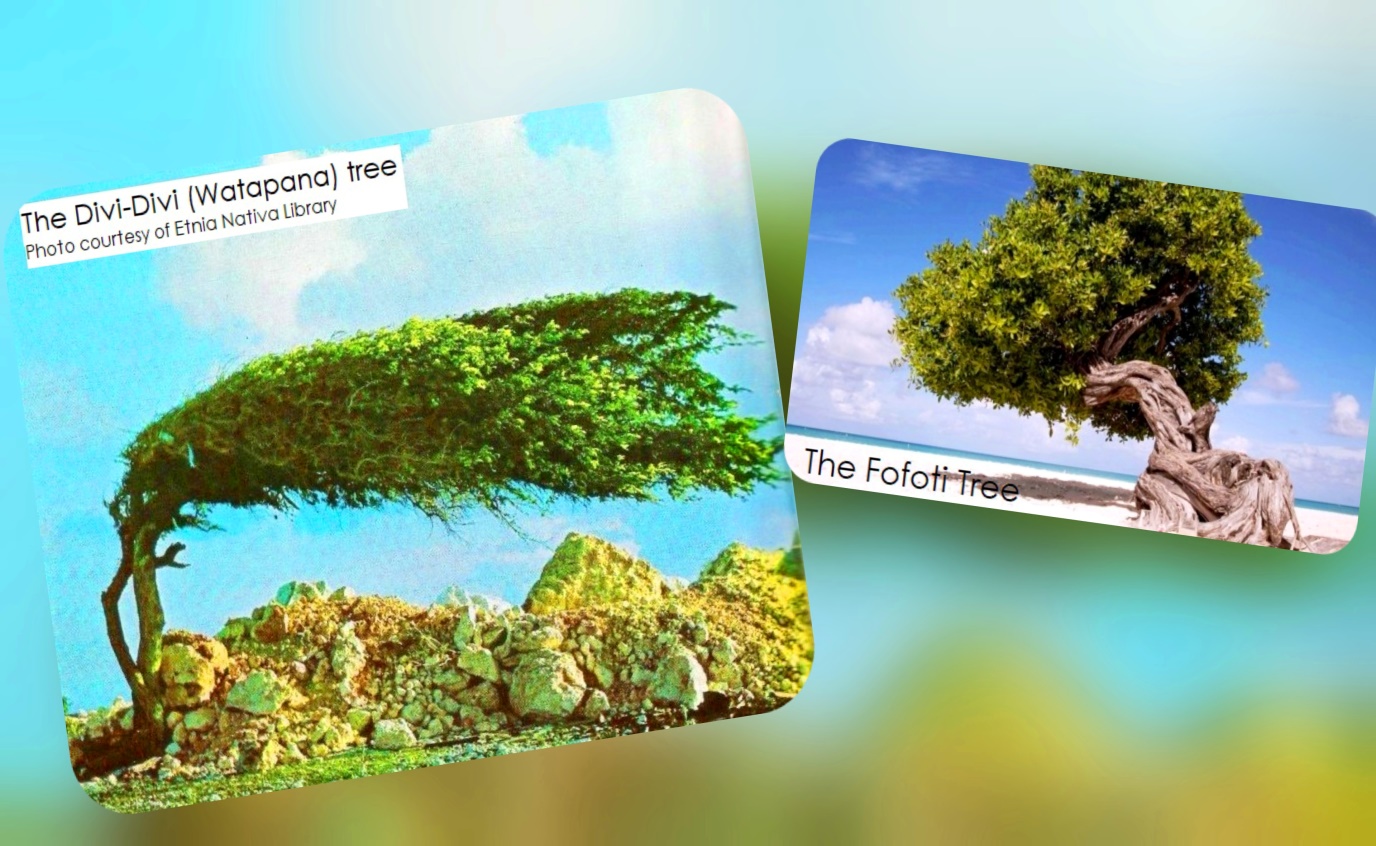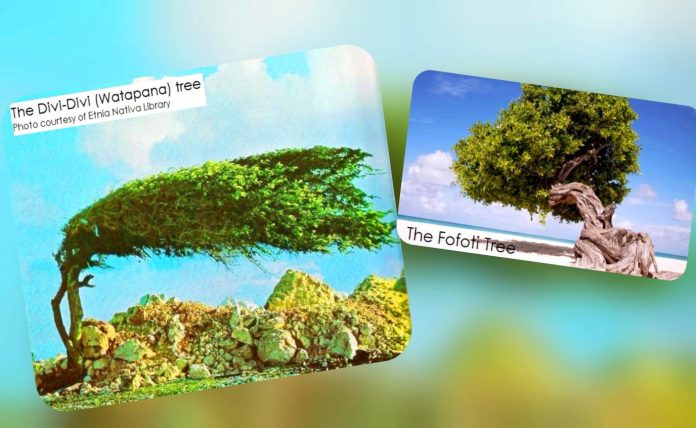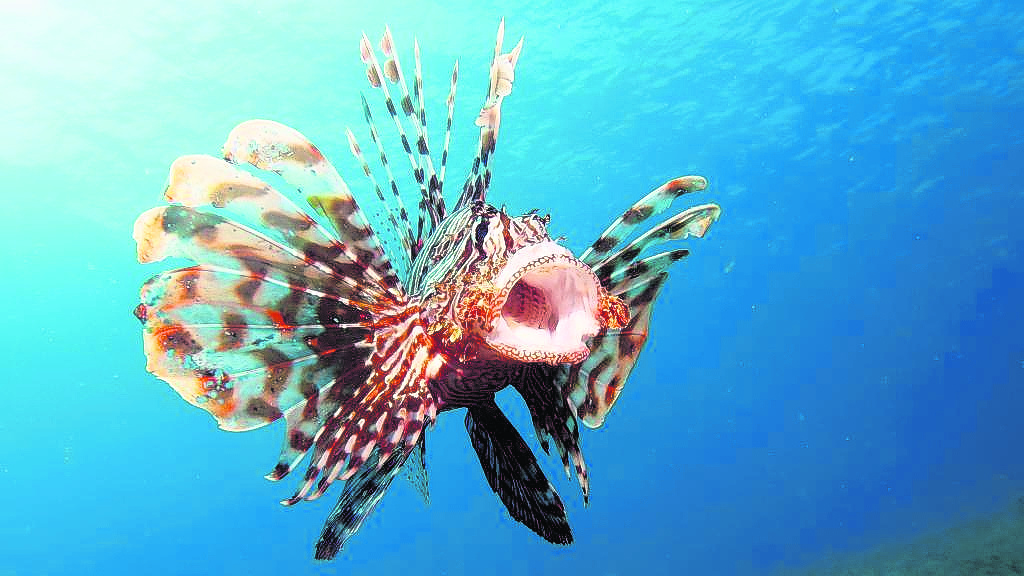Etnia Nativa: Your peek into Native magic, healing the spirit.

Article by Etnia Nativa call us 592 2702 and book your experience!
The narrative of Etnia Nativa—which means Native Ethnicity—highlights the importance of recovering and preserving Aruba’s cultural identity and heritage. In this episode, we delve into two iconic trees of the island.
On the sun-drenched, wind-battered shores of Aruba, there are two iconic trees that have captured the hearts of visitors and locals alike: the Watapana and the Fofoti. Yet, there’s a curious twist to their story — one that blends history, mistaken identity, and the resilience of these stunning natural wonders. Both trees have roots that run deep in the island’s history, each symbolizing the essence of Aruba, and their story is one of survival against the odds.

Aruba’s Watapana tree (officially known as Caesalpinia coriaria) is often mistakenly called the Divi Divi tree — a name actually tied to its famous seed pods, which once held great economic importance. The name “Divi Divi” was first used by the indigenous people of Aruba to refer specifically to the pods of the Watapana tree, prized for their high tannin content. This tannin was widely used in Europe for leather tanning, and for more than a century, Aruba’s Watapana pods were exported across the seas.
The tree became so valuable in the 19th century that cutting a branch without a special permit was illegal. This respect for the Watapana extended beyond its economic worth — the tree also played a critical ecological role, enriching the soil and helping protect the island from erosion. Its importance to Aruba’s survival and identity was so profound that the island’s Parliament eventually declared it the national tree of Aruba.
Yet over time, the Watapana has been overshadowed by another tree — the Fofoti. While both trees are often confused due to their similar coastal habitats and striking forms, it is the Fofoti that typically steals the spotlight in photographs, especially those taken at the iconic Eagle Beach.
The Fofoti, or green buttonwood tree (Conocarpus erectus), is regularly associated with mangroves, as they often share the same habitat. Thanks to its high tolerance for salt, the Fofoti symbolizes Aruba’s ability to thrive under harsh conditions. Its twisted, gnarled bark and low-branching trunk have made it a favorite among photographers and visitors alike. Found along the island’s coastlines, the Fofoti is uniquely adapted to survive extreme dryness, high salinity, alkaline soils, and intense sun — all while providing shelter and food for various pollinators.
Despite its global distribution in tropical and subtropical regions, the Fofoti has become an iconic symbol of Aruba’s strength. Its roots reach deep into the soil, both literally and metaphorically, holding the shoreline together against the relentless waves. Its resilience in the face of difficult conditions mirrors Aruba’s own — an island that has weathered hurricanes, droughts, and the pressures of modern development, yet continues to flourish.
Today, both trees stand proudly as symbols of Aruba’s identity, each with a rich history and a tale to tell. The Watapana’s legacy lives on in the island’s history books, its dried leaves still enriching the soil, its pods once again becoming a precious commodity. The Fofoti, on the other hand, stands tall in photos from Eagle Beach to Malmok, its gnarled branches an emblem of the island’s coastal beauty.
The real story isn’t about mistaken identities, but about resilience. The Watapana and Fofoti, each unique, embody the enduring spirit of Aruba — a spirit that, like these trees, will thrive for generations to come.
So, the next time you see a photo of these iconic trees — whether it’s the Watapana with its rich history or the Fofoti with its twisted, windswept charm — remember and try to identify these two separate and different trees species from each other symbols of Aruba’s heart, soul, and timeless beauty.
Discover Aruba’s true heritage at Etnia Nativa, founded in 1994. A cultural pioneer, it co-founded the National Park, Archaeological Museum, and many initiatives for heritage and conservation. Experience the island’s soul like never before.Whats App +297 592 2702 etnianativa03@gmail.com
















